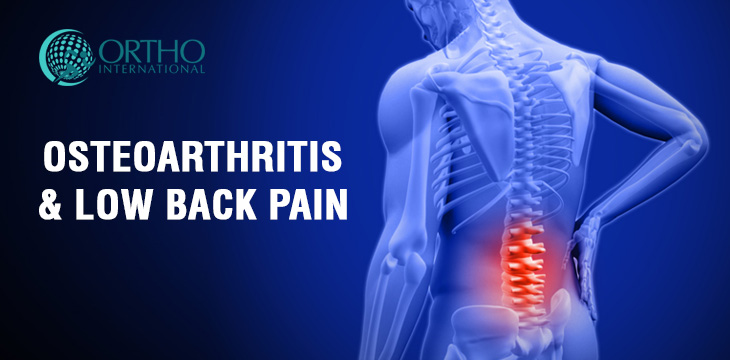Does the pain go or come or it seems to getting worse? This is the time to ask your doctor whether I am suffering from Osteoarthritis which runs from the neck to the lower back. It’s truly said that once we start aging, the cartilage lining the joints of the spine wears down.
Today more than 80 percent of adults undergo low back pain at some point in their life and the most common outcome is job-related mobility contributing to abstained work days. Don’t get disheartened if you have lower back pain as you are not alone. Spine Osteoarthritis generally hits adult once you cross the 50 year mark.
Defining Osteoarthritis?
Osteoarthritis is recognized as a degenerative joint disorder and is an episode in which the protecting cartilage that cushions the top of bones deteriorates or wears down. This induces swelling and the pain may end in the development of osteophytes or bone spurs.
The lower back mainly comprises of five sets of facet joints, one on the left and one on the right side of each spinal bone which might get injured, or become inflamed at some point of life.
Causes of Low Back Pain
Men and women are equally influenced by low back pain, which can vary in rigor from a dull, persistent ache to an unexpected, sharp emotion that leaves the person disabled. Pain in the backbone can originate abruptly because of the result of an accident or by lifting something heavy, or it can originate over time due to age-related alterations of the spine. Moreover, if you are following Inactive lifestyles you further can set the platform for low back pain, especially when a weekday system of getting too little exercise is punctuated by strenuous weekend workout.
About Acute Back Pain
Acute low back pain or short term pain lasts for few days to a few weeks. It manages to settle on its own with self-care and there is no continuing loss of function. The bulk of acute low back pain is fixed in nature, meaning that there is a disorder in the way the components of the back (the spine, muscle, intervertebral discs, and nerves) fit collectively and move.
Back pain can also be symptomatic and may occur due to aortic aneurysm, appendicitis, gynecological issues, osteoporosis, arthritis, and even because of kidney stones. In such cases of back pain where there is no injury or strain, it’s advisable to see a doctor for an assessment.
How Is Osteoarthritis of the Spine Treated?
In most of the cases, treatment of spinal osteoarthritis is geared toward relieving the symptoms of pain and increasing a person’s ability to function. The goal is to have a healthy lifestyle.
Starting therapy may comprise losing weight and even maintaining a healthy weight. It may also combine exercise which may help in weight management. Individuals with persistent low back pain, may be asked to go for non-pharmacologic therapy like yoga, multidisciplinary rehabilitation, acupuncture, mindfulness-based stress reduction, motor control exercise, progressive relaxation, electromyography biofeedback, low-level laser therapy, operant therapy, cognitive behavioral therapy, or spinal manipulation.
The physician may even request certain tests to assist in the analysis of osteoarthritis of the spine. These examinations include X-rays to look for bone damage, bone spurs, and loss of cartilage or disc. In most of the instances, X-rays are not able to show early blow to cartilage. The doctor may also suggest a blood test to eliminate other diseases. Magnetic resonance imaging (MRI) also determines potential damage to discs or narrowing of areas where spinal nerves exit.
Reference
If you or anyone in your family members have this lower back pain do not restrain back yourself at your home. You can definitely visit the best Joint replacement surgeon in Delhi Dr Abhishek Mishra a renowned Orthopedic surgeon.
